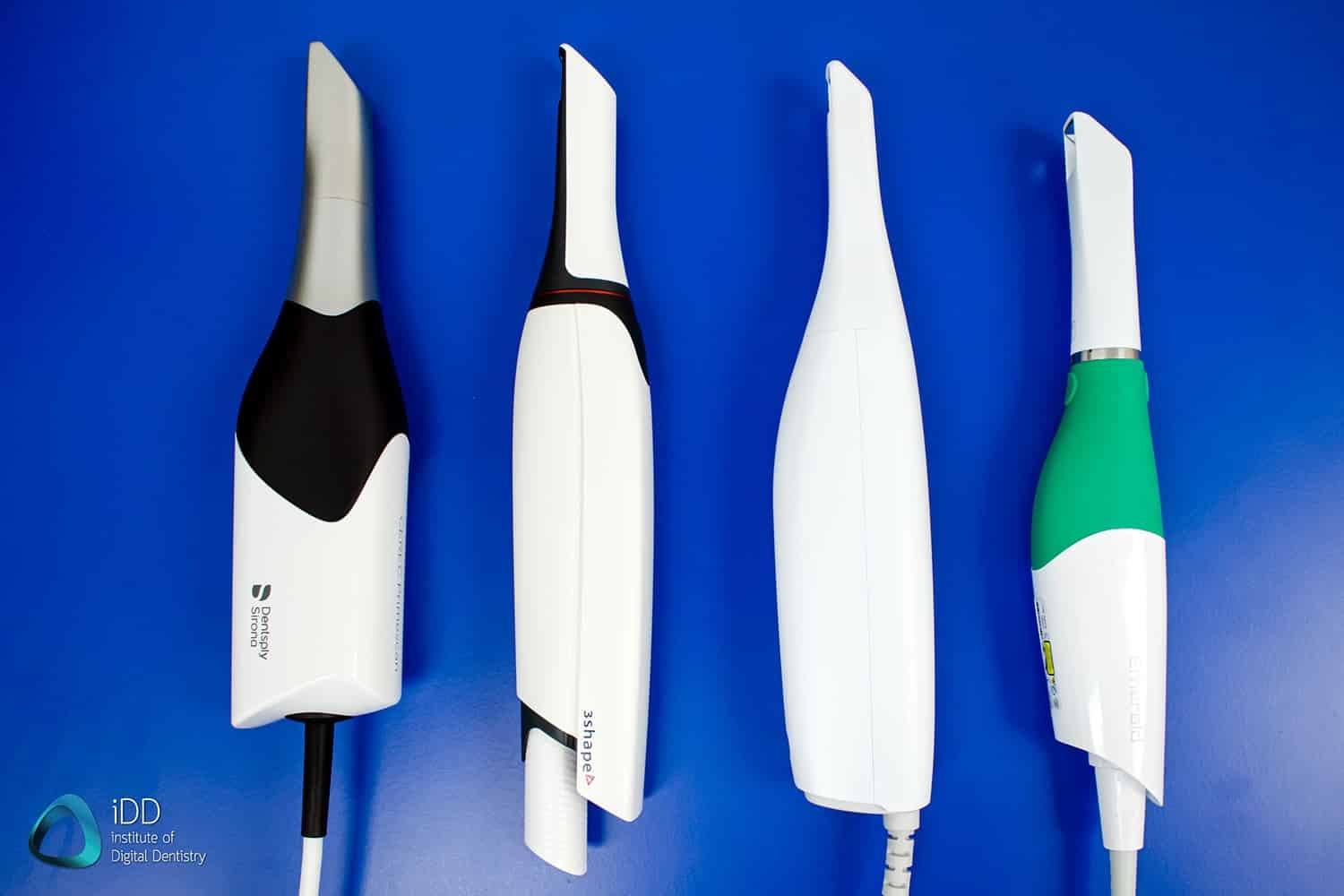- Home
- Blog
- Digital dentistry
- Guide to comparing intraoral s...
A guide to comparing intraoral scanner brands and models
Which intraoral scanner brand?
One of the big steps in going digital is choosing the right intraoral scanner. There are several different intraoral scanners available in the market today, which is why it can be hard to make a decision when all the sales reps say their particular product is the best.
We got into CAD/CAM very early on, over 10 years ago, and we are what you would call early adopters of this technology. The market scenario was different back then compared to now, but we still had similar fears as many of you today, who are thinking about investing in digital dentistry. The two main fears I commonly hear from dentists worldwide through our online training academy is regarding the learning curve and ROI.
Will the investment pay off?
The concerns are whether the scanner will be complicated to use, will the patients like it, will the clinic staff need a lot of training and help, and all this manifests into the worry that the investment in the technology might not yield the desired returns.
Over the years we have continued to invest a lot into CAD/CAM and within our practices we own almost every mainstream scanner available in the market. Having access to all the scanners has given me in depth clinical experience of most, if not all, mainstream scanners and also their CAD/CAM software. We also do over 95% of our prosthodontic work in-house.
“It can be hard to make a decision when all the sales reps say their particular product is the best.”
I realised early on that there are clear advantages and disadvantages of each product, and this information you will never get from sales reps or KOL.
How to objectively compare scanners
Over the years, I have objectively reviewed the scanners from different manufacturers on a number of occasions, without any input from the companies and these reviews have been published on the Institute of Digital Dentistry website. Our reviews are widely popular globally as we are a trusted source of objective digital dentistry information.
What I have realised is when you look at the market as a whole, there are specific niches. In my opinion, one of the best scanners that has emerged is the TRIOS scanners from 3Shape.

Why it’s one of the best dental scanners
I have created a set of comparison criteria which serve as a basis for comparing intraoral scanners.
1. Scanning speed
This is an important factor and should be when considering purchasing scanners. A scanner that is blazingly fast, quick to set up and easy to use will definitely be more beneficial to the practice in the long run.
2. Scanning flow
It is not just about how easy it is to use the scanner, it’s also about how the accompanying software performs. Once the scan is done, it is important to consider how smooth the workflow is within the software to make adjustments and send to your lab. If the software is not intuitive and is complicated or slow, it can affect the entire experience.
3. Scanner size
If you are going to scan multiple times a day, it is important to consider the design and comfort in using the scanner. A scanner that is easy to hold, manoeuvre and doesn’t weigh much will end up being used much more.
4. Ease of use
As mentioned before, an-all round easy-to-use scanner is a clear winner. The ease of use could be around the handling of the scanner and how easily it fits with the everyday workflow of your practice.
5. Investment cost
When it comes to costs, it is important to mention that it’s not just the initial purchase price that you need to think about, it’s also about the running and maintenance costs. Does the scanner come with a subscription model? Is there a cost for set up, training, customer services, etc.
Today, many premium scanners come with some form of subscription model that gives you access to all the software modules, updates, storage, servicing etc. So, I recommend investigating what is available with the subscription model to understand what you are getting yourself into.
How TRIOS 4 ranks on each of these criteria. Read Dr. Ahmad's full review of TRIOS 4.
The dental software ecosystem
Above everything I believe the software ecosystem is a defining factor. We are getting to the point in the market where there are a lot of ‘fast’ scanners. Now what is differentiating different companies is how much they are investing in their software capabilities and evolving this over time.
Indirect restorations, implant guides, aligners, orthodontic bracket guides, nightguards and splints – these are all things that can be performed by the TRIOS CAD software. The implant planning, surgical guide and digital dentures software by 3Shape are some of the best on the market. It is important to understand what is included with your scanner.
It isn’t just an impression device
Intraoral scanners these days should not just be seen as a simple impression device. You can do so much more. For example, in our practices, we utilize every part of the scanner and the software from crown and bridge, implants and now 3D printed dentures. Everything done in-house with superior precision and efficiency.
“What is differentiating is how much they are investing in their software capabilities and evolving this over time.”
If you are thinking of getting into digital dentistry, I highly recommend exploring all your options and using a comparative model. Especially for those considering in-house production of lab work. Digital dentistry is the undeniable future of our profession and that is why we have invested so much in this technology.
Want to compare your options for
‘one of the best scanners that has emerged’?
Browse the TRIOS scanner portfolio.